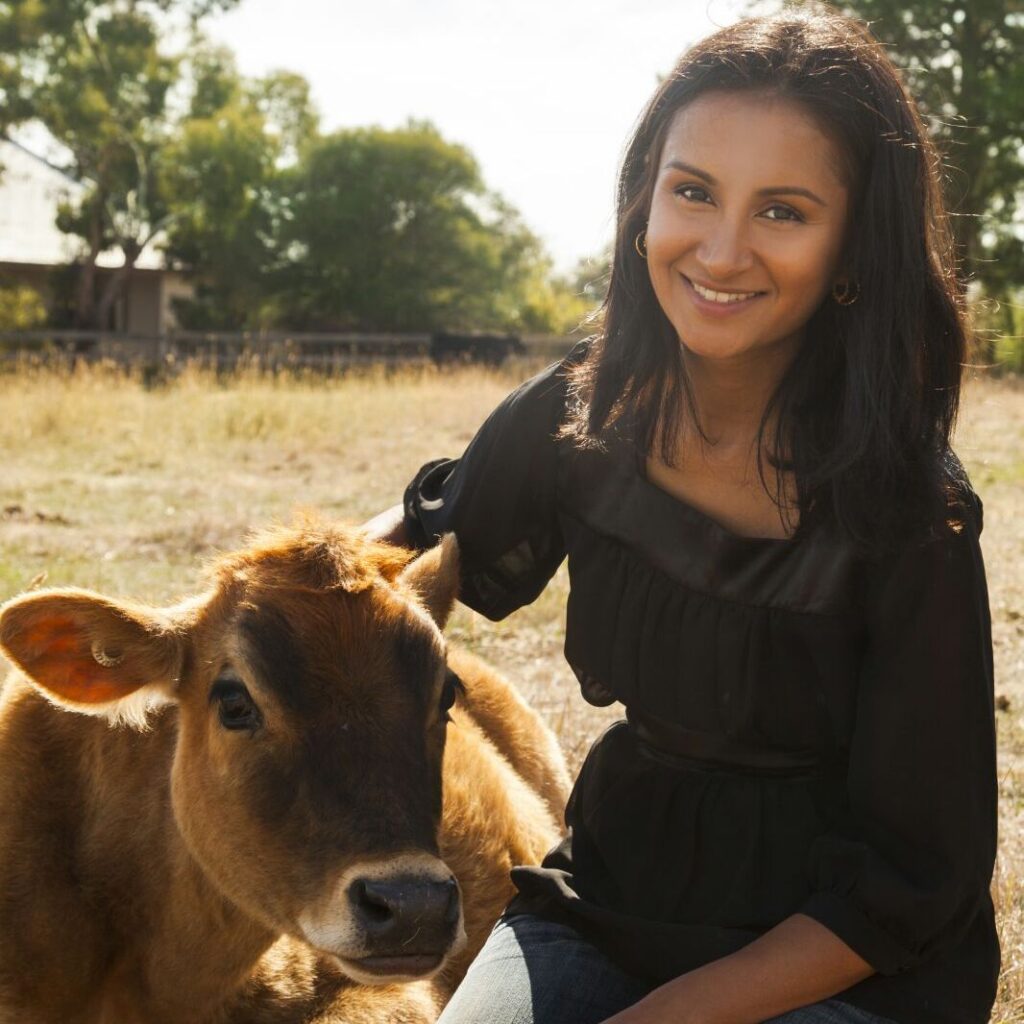
Dr Ash Nayate


In the fast-paced and demanding world we live in, finding moments of stillness and calm can be challenging. In an attempt to find a little peace...
If you haven’t quite got your cycle phases figured out, you’re not alone. But it’s time to tune in to your body’s rhythms - so that you...
Eco period products have risen in popularity – they’re sustainable, affordable, healthy, and convenient. Here’s what you need to know so...
Time for an eco spring clean? Here are seven simple swaps for the conscious consumer
If you want to get your gut in order, Dr Will Bulsiewicz is the expert to help you sort out fact from fiction. This is the gut-health cheat sheet...
There’s a serum for every skin condition, but which active ingredients do what? This is the guide to vegan and sustainably sourced serums...
Mountains stretch down to coastal plains, which hug the curves of over 100 pristine beaches, all gazing out towards the stunning waters of the...
This layered green smoothie is a delicious beverage packed with health-enhancing nutrients.
This dish uses all the trim and leaves to create a zero-waste dish. Serve next time you’re having a party!
Smashed avocado on toast is perhaps the most popular breakfast or brunch item out there, and as much as we love the mighty avo, it generally has...
In this deceptively simple Asian fusion recipe, crispy, golden fish-free fillets top a fragrant Thai green noodle curry, packed with vibrant...
Crunchy, nutty, and subtly sweetened with maple syrup, this gluten-free buckwheat granola makes a sustaining and delicious breakfast or anytime...
Sweet, sticky, spicy warm puddings crowned with a rich and boozy sauce are the perfect dinner party finale.
A luscious, flavoursome, wholefoods, gluten-free parmigiana that packs a 'nut'ritious protein punch.
Spraying sheets and pillows with calming scents can be a wonderful aid to slumber
The next time you go for a walk, discover the wonder of the everyday world around you
A skincare routine can be a way to nourish yourself inside and out
When the clouds converge, practise gratitude for the smallest of glimmers, and learn to dance in the rain.
You are not alone. It’s a legitimate response to an existential threat. So, what can we do about it?
The term eco-anxiety was only coined in 2017 by the American Psychiatric Association to describe a condition of chronic stress caused by fear of environmental doom. It is an umbrella term that describes generalised distress about our planet’s ecological future, relating to ongoing issues like climate change, species extinction, depleted oceans, or specific environmental disasters such as bushfires and floods.
Over the last five years, discussion around eco-anxiety has grown, fuelled by Greta Thunberg’s sharing of her experiences of anxiety, which motivated her to strike against climate change, and inspired millions worldwide to do the same.
A 2021 survey of over 1,000 Australians and New Zealanders found close to two-thirds experienced at least some degree of eco-anxiety. It is more prevalent in people predisposed to depression and anxiety, and in people who are closely connected to the land, such as First Nations people or those tackling environmental issues, such as climate scientists and activists. People living in areas vulnerable to environmental impacts, such as in low-lying coastal regions, are also at higher risk of eco-anxiety, as are people in marginalised communities with less access to mental healthcare.
Many researchers have agreed that eco-anxiety is not necessarily an anxiety disorder in the true clinical sense. Instead, eco-anxiety may be an adaptive response to a genuine threat, which reflects that person’s moral stance in protecting our planet. It can be adaptive when it motivates us to seek out information, identify solutions, and change our behaviour and lifestyle in environmentally friendly ways.
However, eco-anxiety can very easily become maladaptive when it overloads us to the point of incapacity. We may find ourselves overwhelmed by the uncertainty and unpredictability of our ecological future. This can unearth fears around our mortality, our survival, and even the meaning of life – fears we may find intolerable, even unbearable, to contemplate.
With maladaptive eco-anxiety, we’re prone to gathering copious amounts of information, often well beyond what is necessary to make lifestyle changes. We can easily become consumed by news coverage of environmental issues, which leads to overstimulation and a feeling of extreme urgency and, eventually, burnout.
We’re also likely to experience the physical symptoms of a heightened stress response, such as disrupted sleep and appetite, irritability, low mood, lack of motivation, and difficulty concentrating. These have the potential to affect our relationships, job performance, and general wellbeing. Eco-anxiety can also impact important life decisions, such as where to live, whether or not to travel, and whether or not to raise children.
It’s worth noting that both adaptive and maladaptive eco-anxiety can benefit from mental health support.
Traditional advice around eco-anxiety tends to focus on climate action. While this is certainly necessary in dealing with ecological crises, it’s imperative that we have healthy ways of dealing with the spectrum of emotions that inevitably surface, from guilt and grief to anger and frustration.
Emotional management is often seen as inconsequential or even a self-indulgent distraction. However, emotions don’t just affect us – they also affect our decision-making, problem-solving, and collaborative capabilities, which affects the people and world around us. Coming to terms with our feelings is essential in emotional management, particularly as our feelings are likely to resurface as we grapple with environmental issues.
Far from being a distraction, our feelings can be channelled to make us stronger. For example, guilt about past harmful choices can reaffirm our commitment to protecting our planet. Anger at the systems that perpetuate environmental destruction can motivate us to deconstruct those systems and create new ones.
Accepting our feelings doesn’t necessarily mean liking them or enjoying their presence – it simply means acknowledging that they’re there, affecting us. Existential fears around mortality may never be alleviated, but acceptance allows us to observe and channel them in ways that change how we view ourselves (for example, as a person of moral character) and bring meaning to our lives (perhaps as a caretaker of our planet).

Image: Karolina Grabowska on Pexels
Acceptance also allows an internal awareness of our mental state, such as overstimulation, rumination (repetitive, intrusive thoughts), and catastrophic thinking (assuming the worst-case scenario), which are all associated with psychological distress, particularly anxiety. This awareness can help us to put coping strategies in place.
Dealing with overstimulation usually means reducing information input, such as limiting our exposure to news. If we don’t want to disconnect completely, we can set aside specific times to check the news (preferably not first thing upon waking or last thing before sleeping). The purpose of this is not denial, but simply keeping input to a manageable level.
Rumination and catastrophic thinking heighten anxiety and can make it difficult for us to process our thoughts logically. Writing can be helpful for both types of thinking. With rumination, writing down a step-by-step action plan can help us take empowered action and break the repetitive thought cycle. With catastrophic thinking, writing down the thoughts and then setting them aside for a dedicated ‘worry time’ each day can help keep us balanced. Writing helps us logically organise our thoughts, which also enables us to question them. In doing so, we may notice patterns in where and when the thoughts tend to occur, which can help us identify triggers.
Eco-anxiety often elicits despair, as our individual actions may seem futile against the enormity of continuing ecological damage. Despair may lead to isolation, helplessness, and hopelessness, making our distress exponentially worse. Finding a supportive, like-minded community is an important buffer to these feelings. Like-minded groups can be found online or in our neighbourhoods, such as community environment groups, beach clean-up initiatives, or ‘buy nothing’ groups for sharing and swapping items. In these communities, we find connection and camaraderie, ideas and practical strategies for being more environmentally conscious, and a safe space to express our feelings.
When connected with people who are striving for the same future, we tend to feel more motivated, hopeful, and optimistic. As a collective, we become part of something that’s bigger than ourselves, which helps us overcome feelings of helplessness about the limits of individual action. Hopefulness is particularly useful in managing eco-anxiety – as long as it leads to action and resilience, rather than passivity. We can indeed alleviate our eco-anxiety with acceptance and action.
Lead image: Arthouse Studio on Pexels
Going vegan can be a life-changing experience, and it’s not without its challenges. The good news is you’re not alone. There are identifiable...
Eco period products have risen in popularity – they’re sustainable, affordable, healthy, and convenient. Here’s what you need to know so...
Time for an eco spring clean? Here are seven simple swaps for the conscious consumer
Mountains stretch down to coastal plains, which hug the curves of over 100 pristine beaches, all gazing out towards the stunning waters of the...
If you want to get your gut in order, Dr Will Bulsiewicz is the expert to help you sort out fact from fiction. This is the gut-health cheat sheet...
There’s a serum for every skin condition, but which active ingredients do what? This is the guide to vegan and sustainably sourced serums...
If you haven’t quite got your cycle phases figured out, you’re not alone. But it’s time to tune in to your body’s rhythms - so that you...
This salad is a take on urap sayur that instead uses crumbled tempeh and toasted almonds to top the dish. A balance of spicy, sweet, and sour...
Shifting to a wholefood plant-based diet doesn’t mean missing out on cheesecake. This recipe uses tofu instead of cream cheese and is therefore...
This Indonesian fried noodle dish can be found at both high-end restaurants and street food vendors in the region – it’s a popular dish for...
The trick to this super-vibrant green curry is to add a bunch of blitzed leafy greens into the paste to ensure a lovely, bright-green colour. I...
Spraying sheets and pillows with calming scents can be a wonderful aid to slumber
The next time you go for a walk, discover the wonder of the everyday world around you
A skincare routine can be a way to nourish yourself inside and out
When the clouds converge, practise gratitude for the smallest of glimmers, and learn to dance in the rain.